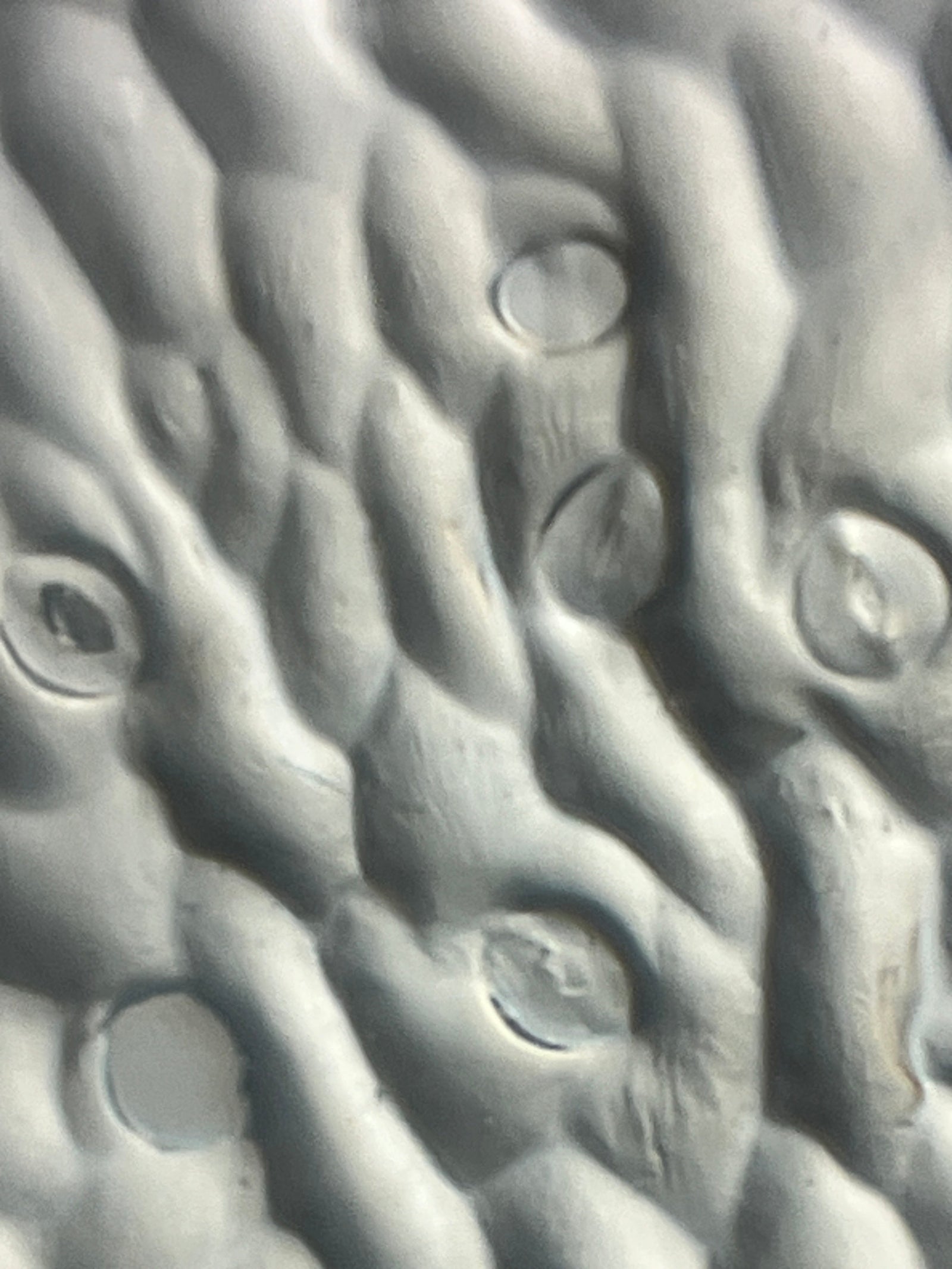Ever wonder which flowers in your garden the bees are visiting? Did you know that you can find out with your Foldscope? I found a dead bee on the ground and took a closer look at it under my Foldscope 2.0! Read on to find out what I saw!

Carpenter Bee Pollination Strategies
The bee I found was a carpenter bee. These large bees are important pollinators. When they land on a flower they will either use their unique mouthparts to steal the nectar from the flower or do something called buzz pollination. This involves grabbing onto the flower and vibrating in a way that releases the pollen from the anther!

Carpenter Bee Body Structure
Carpenter bees have hairless black abdomens and hairy heads, legs, and thoraxes. Pollen tends to stick to their hair as they fly from flower to flower.

I saw a lot of carpenter bees on my lavender plants, so I thought that there would be lavender pollen on the body of the bee that I found.

First, I looked at lavender pollen under my Foldscope to familiarize myself with what this type of pollen looked like.

Then I looked at the different parts of the carpenter bee to view the pollen grains on its body. I looked at each body part separately under my Foldscope and took pictures. I also prepared slides by pressing clear tape to the abdomen and thorax of the bee and fixing the tape to a glass slide. Do you think this carpenter bee visited my lavender plants? What other flowers do you think it visited?

Do Your Own Investigation
When you look at your backyard or outdoor space near your home, what bees and flowers do you see? Do you think that the bees that you see are visiting all of the flowers in your garden or only a few of them? How can you find out?

Art Connection
As you collect the images of the pollen grains of the plants in your garden and on the bodies of pollinators visiting your garden, take some time to consider drawing what you see. Draw the pollen grains at different magnifications and with different lighting techniques. Pay attention to the surface features (are there spikes, is it smooth, are there patterns on the surface, are there pores or openings?), the size, and the shape of each individual grain of pollen.

Have you tried to investigate the journey of a bee with a Foldscope 2.0? Use your Foldscope to help you better understand the lives of the organisms living around you. Share your microscopic images and thoughts on the Microcosmos. Be sure to tag us on social media when you post the results of your explorations, creations, and discoveries! We love to see how Foldscopers around the world are using their Foldscopes in new and innovative ways!
Facebook: @Foldscope
Twitter: @TeamFoldscope
Instagram: @teamfoldscope
Threads: @teamfoldscope
Sources:
https://bestbees.com/2022/09/02/carpenter-bee/
https://www.buzzaboutbees.net/carpenter-bees-buzz-pollination.html
https://www.buzzaboutbees.net/carpenter-bee-facts.html


